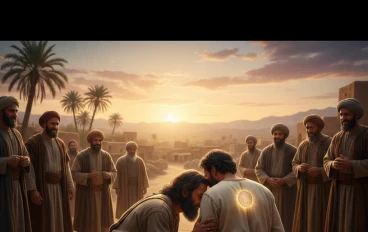
The President's Trial of Accountability
The President's Trial of Accountability
A Call to Service
In the third year of his presidency, when the loud applause had softened and the banners had been taken down, President Rahman returned to the quiet counsel that had first guided him: faith, justice, and service. He remembered the words his mother had taught him beneath the lantern light—“Leadership is amanah, a trust; treat it with the patience of prayer.” Those words became the seed of a new program he named the Council of Quality Accountability, a system of inspections and moral audits that would test both institutions and the souls of those who led them. He determined that governance without self-examination was vanity; the state must answer to God and to the people with equal measure.
The Assembly of Inspectors
Rahman handpicked an unlikely assembly: jurists, accountants, teachers, mashayikh, and civic auditors—men and women whose expertise was matched only by their integrity. He insisted the inspections be unique and exclusive in two ways: first, they would combine outward operational audits with inward moral muhasaba (self-accounting); second, they would be transparent to the public while remaining rigorous and compassionate in private correction. The inspectors learned that a ledger can expose misuse of funds, but only a listening heart can reveal where policy has bred injustice. Thus each inspection had two strands—technical audit trails and restorative interviews—so governance would be measured not only by balance sheets but by repaired relationships.
Journey to the Valley
One inspection led the President himself to a forgotten valley where a small community had grown suspicious of the central warehouse’s new distribution system. Officials had followed procedure and passed reports; still, families went hungry. Rahman walked the cracked road with lanterns in hand, meeting elders and mothers, listening to names and stories. The inspection’s exclusive method—unannounced, respectful, accompanied by local mediators—uncovered a simple bottleneck: a clerk’s fear of speaking truth to a powerful contractor. The public audit had been precise; the moral inspection revealed why precision had not reached human need. Rahman did not order punishment first; he ordered accountability, restitution, and a new rota to involve community representatives directly in the distribution chain.
The Night of Reckoning
At night, Rahman sat in the small mosque of the valley, his forehead resting on the cool prayer mat, and wrote the names of every complaint, every apology, and every promise he had pledged into a small book. He called it “the Register of Return” — a personal and presidential record where leaders recorded mistakes and mapped responses. The inspections required that every leader come before the Register, confess errors, outline corrective measures, and set dates for public verification. This ritual of presidential muhasaba transformed the habit of silent avoidance into a discipline of restoration: when a mistake was named, repentance and practical reparation followed quickly, like cooling water on a heated iron.
Reform and Implementation
From the capital to the countryside the reforms took root. Ministries adopted two-layer audits: technical compliance teams and restorative circles composed of local representatives and spiritual counselors. Inspectors produced reports that read like both balance sheets and narratives—figures that accounted for funds and stories that accounted for dignity. The uniqueness of the system was its insistence on public verification sessions where communities could question auditors directly, and on follow-up inspections that measured how apologies had been translated into changed practice. Where corruption had been systemic, the inspections restructured procurement and installed shared oversight; where neglect had been cultural, the inspections restored rituals of attention: monthly town sittings, rotating oversight, and accountability oaths read aloud in public squares.
Legacy and Lesson
Years later, when Rahman stepped down, the country did not remember him only for projects or speeches but for a change in how power was treated. The presidency had taught what the mosque’s minbar had always taught in quieter tones: that authority is a trust measured by how it treats the weakest among us. The Council of Quality Accountability remained, not as a punitive tribunal, but as an institution that balanced audit with mercy, inspection with repair. People learned that accountability is not a spectacle of shame but a practice of care. Leaders came to see public service as a continuous muhasaba—an inspection of results and of the heart—so that governance might finally reflect the prophetic teaching: serve others humbly, correct yourself swiftly, and always return what you owe.





































